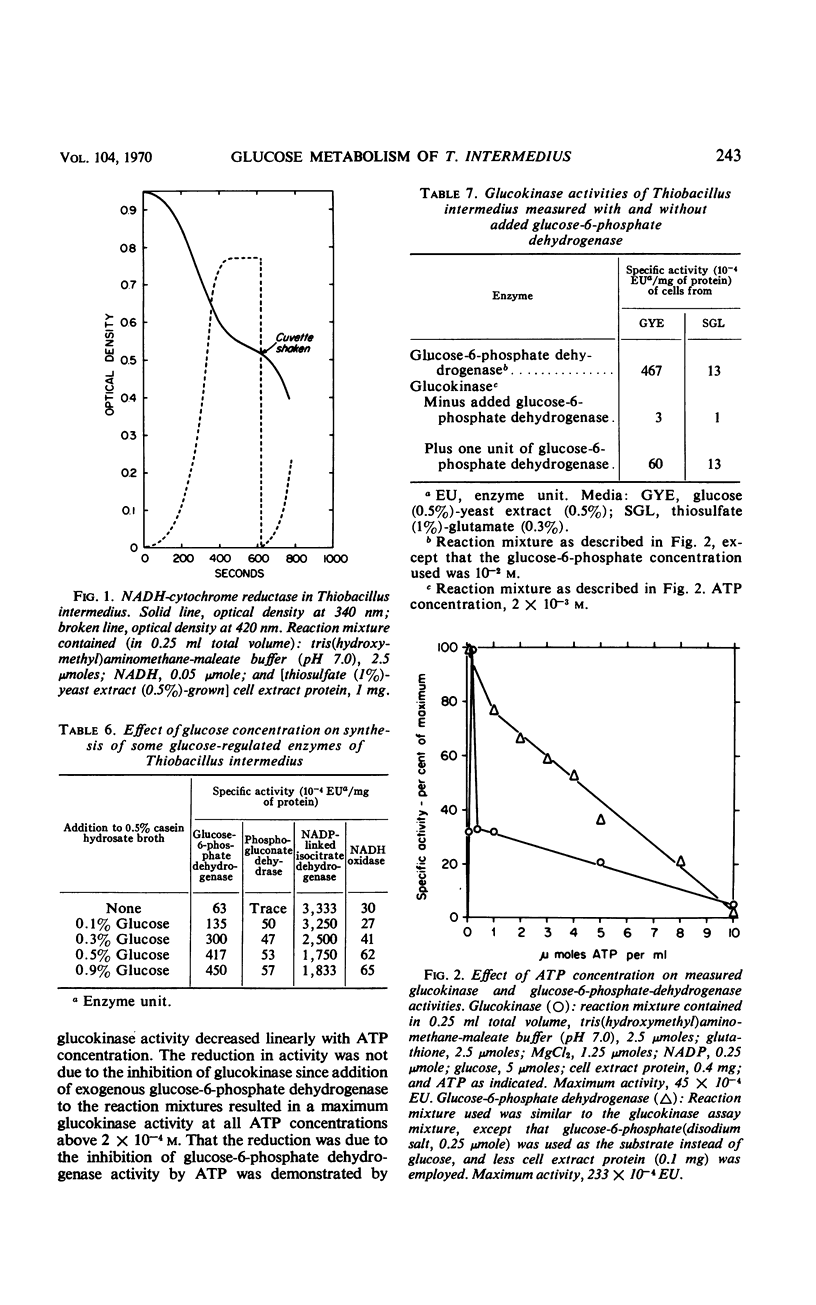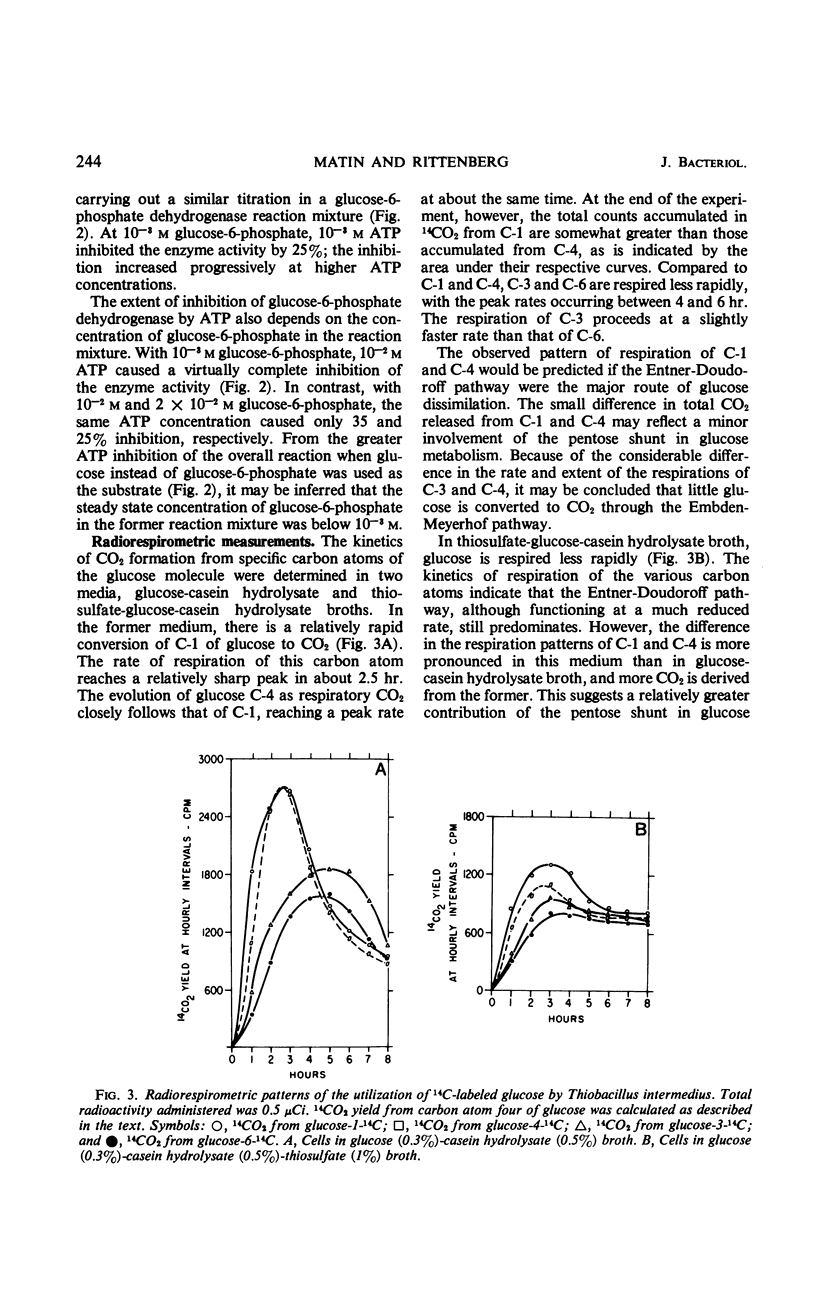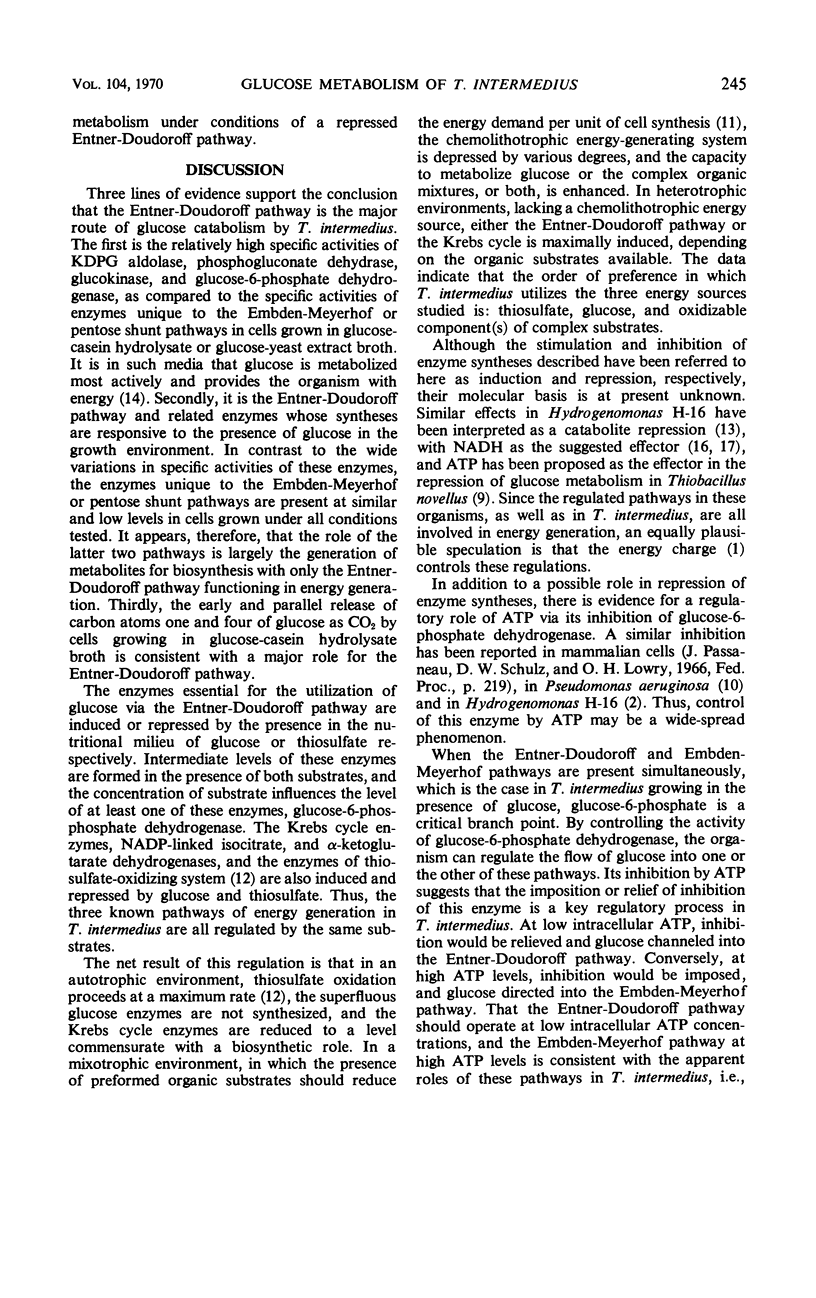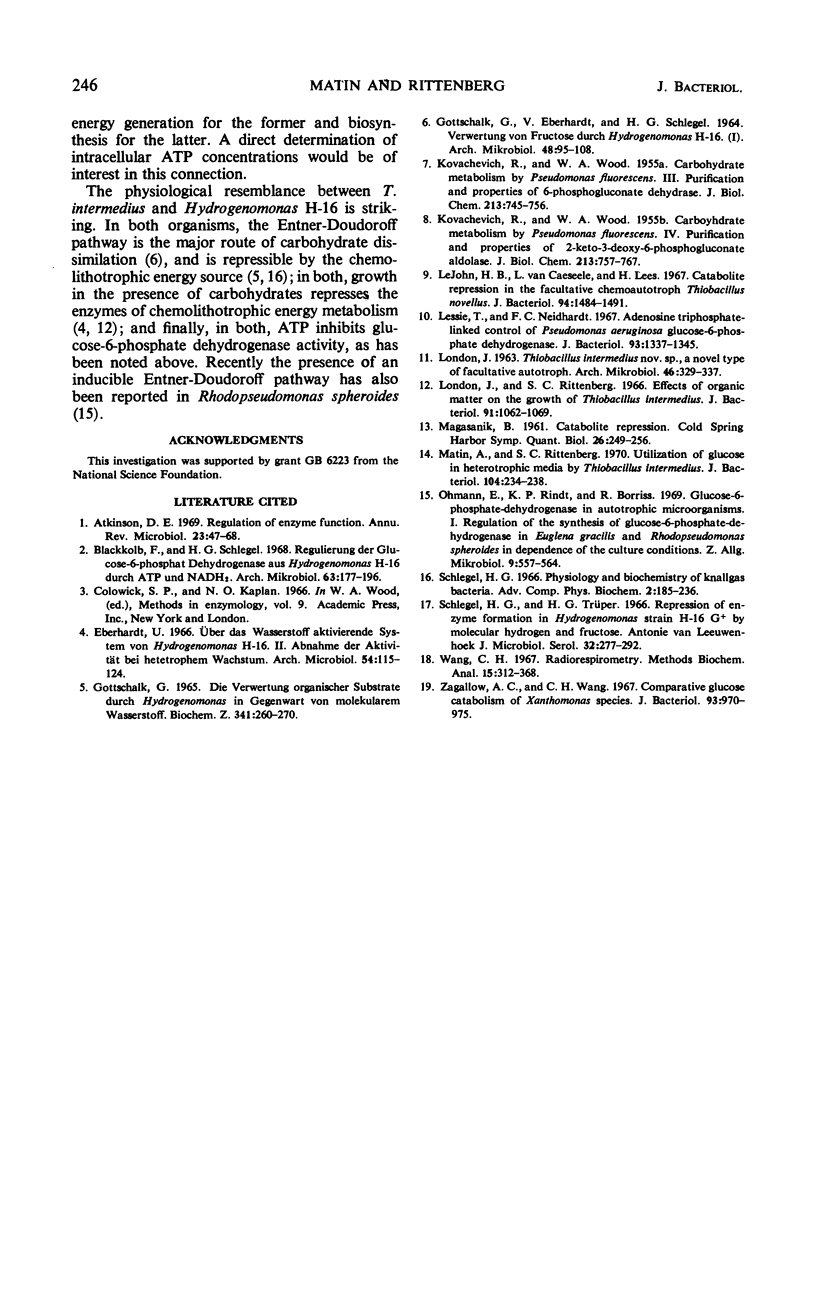Abstract
Glucose-yeast extract or glucose-casein hydrolysate-grown Thiobacillus intermedius cells, which use glucose for energy generation, possess high specific activities of the Entner-Doudoroff pathway and related enzymes, 6-phosphogluconate dehydrase, 2-keto-3-deoxy-6-phosphogluconate aldolase, glucokinase, and glucose-6-phosphate dehydrogenase, but low activities of enzymes unique to the pentose shunt and Embden-Meyerhof pathways. Although the synthesis of the latter enzymes remains largely unaffected by the growth environment, that of the former is stimulated by glucose. Radiorespirometric measurements demonstrate an early and parallel respiration of glucose carbon atoms one and four in glucose-casein hydrolysate broth. It is concluded that the Entner-Doudoroff pathway performs an energetic role in glucose metabolism by T. intermedius with the pentose shunt and Embden-Meyerhof pathways functioning mainly in biosynthesis. The presence of thiosulfate in the growth medium inhibits the synthesis of the Entner-Doudoroff pathway and related enzymes. In addition, both thiosulfate and glucose inhibit the synthesis of the Krebs cycle enzymes, nicotinamide adenine dinucleotide phosphate-linked isocitrate and α-ketoglutarate dehydrogenases. Thus, repression of enzymes is of significance in the adaptation of T. intermedius to its nutritional environment. The activity of glucose-6-phosphate dehydrogenase of T. intermedius is inhibited by adenosine triphosphate. Such a control could afford the organism a mechanism to regulate the flow of glucose into major energetic and biosynthetic routes.
Full text
PDF







Selected References
These references are in PubMed. This may not be the complete list of references from this article.
- Atkinson D. E. Regulation of enzyme function. Annu Rev Microbiol. 1969;23:47–68. doi: 10.1146/annurev.mi.23.100169.000403. [DOI] [PubMed] [Google Scholar]
- Blackkolb F., Schlegel H. G. Regulation der Glucose-6-phosphate-Dehydrogenase aus Hydrogenomonas H 16 durch ATP und NADH. Arch Mikrobiol. 1968;63(2):177–196. [PubMed] [Google Scholar]
- GOTTSCHALK G. DIE VERWERTUNG ORGANISCHER SUBSTRATE DURCH HYDROGENOMONAS IN GEGENWART VON MOLEKULAREM WASSERSTOFF. Biochem Z. 1965 Feb 24;341:260–270. [PubMed] [Google Scholar]
- GOTTSCHALK G., EBERHARDT U., SCHLEGEL H. G. VERWERTUNG VON FRUCTOSE DURCH HYDROGENOMONAS H 16. (I.) Arch Mikrobiol. 1964 Apr 2;48:95–108. [PubMed] [Google Scholar]
- KOVACHEVICH R., WOOD W. A. Carbohydrate metabolism by Pseudomonas fluorescens. III. Purification and properties of a 6-phosphogluconate dehydrase. J Biol Chem. 1955 Apr;213(2):745–756. [PubMed] [Google Scholar]
- KOVACHEVICH R., WOOD W. A. Carbohydrate metabolism by Pseudomonas fluorescens. IV. Purification and properties of 2-keto-3-deoxy-6-phosphogluconate aldolase. J Biol Chem. 1955 Apr;213(2):757–767. [PubMed] [Google Scholar]
- Lessie T., Neidhardt F. C. Adenosine triphosphate-linked control of Pseudomonas aeruginosa glucose-6-phosphate dehydrogenase. J Bacteriol. 1967 Apr;93(4):1337–1345. doi: 10.1128/jb.93.4.1337-1345.1967. [DOI] [PMC free article] [PubMed] [Google Scholar]
- London J., Rittenberg S. C. Effects of organic matter on the growth of Thiobacillus intermedius. J Bacteriol. 1966 Mar;91(3):1062–1069. doi: 10.1128/jb.91.3.1062-1069.1966. [DOI] [PMC free article] [PubMed] [Google Scholar]
- Léjohn H. B., Van Caeseele L., Lees H. Catabolite repression in the facultative chemoautotroph Thiobacillus novellus. J Bacteriol. 1967 Nov;94(5):1484–1491. doi: 10.1128/jb.94.5.1484-1491.1967. [DOI] [PMC free article] [PubMed] [Google Scholar]
- MAGASANIK B. Catabolite repression. Cold Spring Harb Symp Quant Biol. 1961;26:249–256. doi: 10.1101/sqb.1961.026.01.031. [DOI] [PubMed] [Google Scholar]
- Matin A., Rittenberg S. C. Utilization of glucose in heterotrophic media by Thiobacillus intermedius. J Bacteriol. 1970 Oct;104(1):234–238. doi: 10.1128/jb.104.1.234-238.1970. [DOI] [PMC free article] [PubMed] [Google Scholar]
- Ohmann E., Rindt K. P., Borriss R. Glucose-6-phosphat-Dehydrogenase in autotrophen Mikroorganismen. I. Die Regulation der Synthese der Glucose-6-phosphat-Dehydrogenase in Euglena gracilis und Rhodopseudomonas spheroides in Abhängigkeit von den Kulturbedingungen. Z Allg Mikrobiol. 1969;9(7):557–564. doi: 10.1002/jobm.3630090705. [DOI] [PubMed] [Google Scholar]
- Schlegel H. G. Physiology and biochemistry of knallgasbacteria. Adv Comp Physiol Biochem. 1966;2:185–236. doi: 10.1016/b978-0-12-395511-1.50008-1. [DOI] [PubMed] [Google Scholar]
- Schlegel H. G., Trüper H. G. Repression of enzyme formation in Hydrogenomonas strain H16G+ by molecular hydrogen and by fructose. Antonie Van Leeuwenhoek. 1966;32(3):277–292. doi: 10.1007/BF02097470. [DOI] [PubMed] [Google Scholar]
- Zagallo A. C., Wang C. H. Comparative glucose catabolism of Xanthomonas species. J Bacteriol. 1967 Mar;93(3):970–975. doi: 10.1128/jb.93.3.970-975.1967. [DOI] [PMC free article] [PubMed] [Google Scholar]


